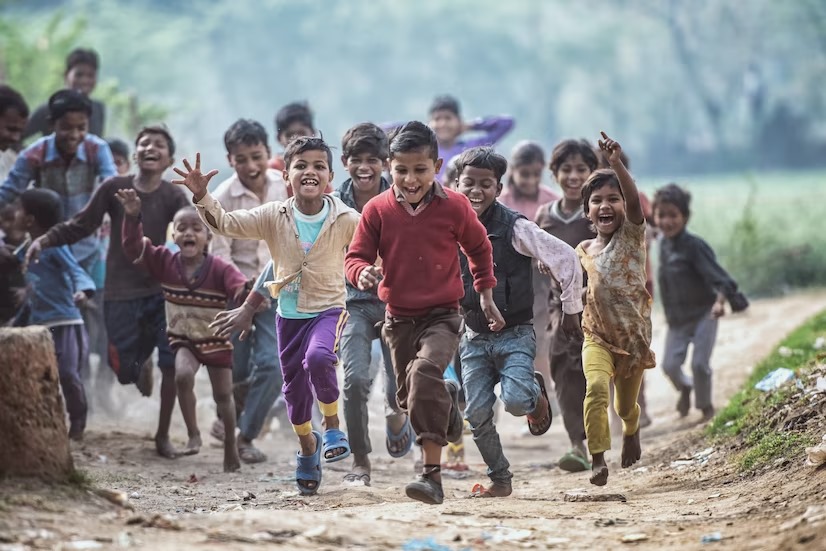
As per the Census 2011, there are 472 million children in India under the age of 18 years, representing 39% of the country’s total population.
Making sure that India’s children experience all-round development is a critical part of the country’s well-being. Children’s rights and their sustainable development are also causally linked to economic and human development goals.
To make sure the various schemes and programmes are effectively implemented, the Cabinet has passed three crucial umbrella schemes to be implemented in mission mode: the Mission Poshan 2.0 – Integrated Nutrition support Programme, the Mission Shakti – Lifecycle Support System for Women and Mission Vatsalya – Healthy & Happy Childhood for Every Child in India.
Mission Vatsalya is a Centrally-sponsored scheme, wherein the Centre bears 60% of the costs and the States bear the remaining 40% (with a caveat for the eight states in the Northeast — as well as Himachal Pradesh, Uttarakhand and the UT of Jammu and Kashmir — where the Centre: State/UT share will be 90:10).
Mission Vatsalya envisages a robust ecosystem through the network of State and local Governance systems to ensure the safety and security of children in the country. The scheme brings together the focus of all relevant State actors to achieve the objectives of development and child protection in line with the Sustainable Development Goals. It emphasises all of the children’s rights as outlined under the United Nations Convention on Rights of the Child (UNCRC), a Convention that India signed 30 years ago, on 11 December 1992. The earlier Child Protection Services Scheme (2017) is now subsumed under the Mission Vatsalya.
The big fillip for us all is that the Mission advocates for family-based care (as against institution-based care) for vulnerable children, with institution-based care to be used as a last resort only. In other words, this approach has now evolved to make sure that children have the opportunity to grow up in families, to become healthy, happy, income-producing person and experience a true sense of belonging.
Why is this such a significant step? From children’s point of view, institutional care has been scientifically proven to be less effective in their upbringing compared to family-based upbringing.
A family is often considered the best and safest place for a child to thrive because it provides a sense of belonging, stability, and support. Children brought up in a loving and nurturing family are more likely to develop strong emotional bonds and a positive sense of self-worth.
Families also provide a safe and secure environment for children to explore and learn about the world around them. They offer protection from external threats and hazards and provide a sense of routine and structure that can be important for a child’s development. Families can also provide a range of resources and opportunities to help children thrive. These may include access to education, healthcare, extracurricular activities, and the support and guidance needed to make important decisions and navigate challenges. Overall, the family is an essential source of love, support, and stability for children, and plays a vital role in their growth and development.
In India, sending children to an institution (or a Child Care Institution) is often a crisis response. A family that finds itself in a seemingly unresolvable situation such as the death of the primary breadwinner, will sometimes try to “protect” its children by taking them out of the immediate situations of distress and admitting them to a local Child Care Institution. For such families, schemes and protection mechanisms such as Mission Vatsalya support the creation of family-strengthening mechanisms that connect families to social safety nets such as rations, free-of-cost medical care and free-of-cost education. The hypothesis is that if a family gets timely support to tide over a crisis, children would never need to be separated from their families in the first place, thus preventing the need for institutionalisation. Mission Vatsalya provides direct financial assistance as well, in the form of non-institutional care at the rate of Rs. 4000/- per month per child, paid directly into the guardian’s bank account.
Panchayats and Municipal Local Bodies have a big role to play as well. From vulnerability mapping, implementation of appropriate interventions, resource mapping in terms of family strengthening services and regular monitoring to develop a robust social safety net for children – the Mission envisages an intense role for local governance bodies too.
For children who are old enough to leave the Child Care Institutions upon attaining eighteen years of age, Mission Vatsalya talks about providing for their education, giving them employability skills and placement, industry apprenticeships, loan support for starting businesses as well as places for stay to facilitate their reintegration into mainstream society.
Conclusion
According to the World Bank, about 21% of the world’s children under the age of 18 lived in India as of 2021. This means that about one in every five children worldwide is an Indian child. India has a large and growing population, with over 1.4 billion people, and a relatively young population, with more than half of its population under 25.
Mission Vatsalya is a Government scheme that aims to provide comprehensive care for one-fifth of the world’s children. The program focuses on providing children with access to healthcare, education, nutrition, and other basic needs and protecting them from abuse, neglect, and exploitation. The scheme is designed to ensure that every child in India has the opportunity to grow up healthy and well-rounded, and reach their full potential. Given the potential of the scheme to make transformational changes for such a large number of children, it requires collaborative efforts by all — especially civil society and NGOs, to make sure its vision for children comes true.
Author: Kusum Mohapatra
Disclaimer: This article was originally published in the blog section of The Times of India in June 2023. The views expressed in the article are the author’s and do not necessarily reflect those of Miracle Foundation India.
